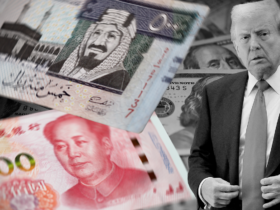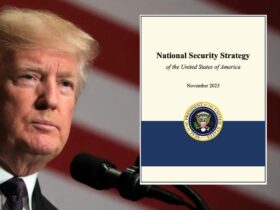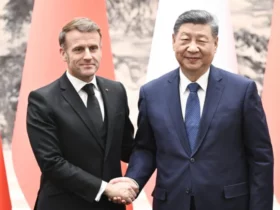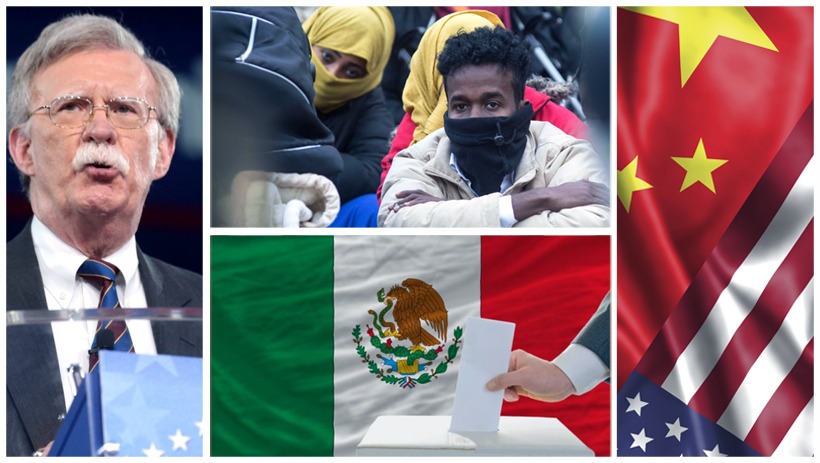But China is not Japan…
But China is not Japan…
By Orçun Göktürk from Beijing / China
On September 22, 1985, the United States hosted its allies within the “capitalist bloc” at the Plaza Hotel in New York. The main objective of the meeting, attended by West Germany, Japan, France, and the United Kingdom, was to reduce the value of the excessively overvalued U.S. dollar—particularly against the Japanese yen and the German mark—and to decrease the U.S. trade deficit. Although today this process is portrayed in liberal narratives as a simple monetary policy adjustment, it was actually an attempt by the U.S. to overcome its economic difficulties by economically bullying even its own allies.
Escape from Production to Financialization
The oil crises of the 1970s and stagflation in the American economy resulted in a significant shift in the U.S. economic paradigm. With Ronald Reagan’s election as president in 1980, a period known as “Reaganomics” began and had a global impact, marking the start of the neoliberal era. This new period aimed to reduce the public sector’s role in the market, emphasize privatization, cut taxes, weaken labor unions, liberalize financial markets, and reduce public expenditures. Additionally, developing countries were subjected to intense pressure to weaken their national state structures.
During this period, the U.S. underwent a process of financialization, during which its manufacturing sector significantly contracted. In 1979, 22% of the total workforce was employed in manufacturing, but by 1985 this had declined to 17%. In the first five years of neoliberal policies, the U.S. saw sharp declines in its automotive and steel production. The “Big Three”—General Motors, Ford, and Chrysler—suffered major losses in market share. Japanese brands such as Toyota, Honda, and Nissan, as well as German brands like Volkswagen, BMW, Audi, and Mercedes-Benz, which produced more affordable vehicles, gained market share. American manufacturers were losing their competitive edge against these countries.
Large American industrialists began pressuring Reagan over the lost market share and massive trade deficits, particularly with Japan. The Japanese yen’s undervaluation against the dollar was blamed. Americans labeled the situation “unfair competition.” Japan’s success in high-tech products was causing significant losses in the U.S. automotive and electronics sectors. But the problem lay more in the U.S.’s own deindustrialization process and its structurally finance-centered transformation than in Japan’s success.
By 1985, the U.S. trade deficit had reached a record $150 billion. The pressure from American industrialists led to action, and through the Plaza Accord, the U.S. dollar was devalued against the Japanese, French, British, and German currencies. From 1985 to 1987, the U.S. dollar lost approximately 51% of its value against the Japanese yen. Similar devaluations occurred against the German mark and other European currencies. Additionally, political and economic pressure was applied on Japan and Germany to increase their demand for American products.
‘The Lost Decade’ in Japan
An unexpected and negative consequence of the agreement was the beginning of a prolonged stagnation in Japan’s economy, known as the “Lost Decade.” The yen’s sharp appreciation adversely affected Japanese exports, and the Bank of Japan’s low-interest rate policies to counter this led to asset bubbles. When these bubbles burst, Japan entered a long period of deflation and low growth.
On the German side, the Bundesbank kept its distance from external intervention in monetary policy. To protect export profits, German industrial capital began shifting production to Eastern Europe and China. This increased the role of the post-Plaza process in the restructuring of global production chains.
The Plaza Accord is a concrete example of how the U.S. wields its hegemonic power not only militarily and diplomatically, but also economically. The U.S. exported its neoliberal crisis to countries like Japan and Germany, correcting its trade balance in the short term but causing structural crises in economies like Japan’s.
Trump’s Economic Advisor: Objective is a New Plaza Accord
Stephen Miran, one of Trump’s top economic advisors and recently appointed chairman of the White House Council of Economic Advisors, wrote an article at the end of last year in which he proposed a new Plaza Accord. In his November article titled “A User’s Guide to Restructuring the Global Trade System,” Miran frequently stated that the U.S. dollar was artificially strong and that this harmed American industry. In other words, the strong dollar “placed a heavy burden on the U.S. manufacturing sector” and eroded the competitiveness of U.S. exports. This reflects the same logic as in 1985: “Weaken the dollar, boost exports.”
This time, however, the target is not Japan, but China. Yet China is not a country that will accept such economic bullying like Japan did. China is fundamentally different from Japan in both its economic structure and geopolitical posture.
‘China Will Not Submit’
Firstly, unlike Japan, China is not among the countries that submit to the so-called rules-based international system led by the U.S. Chinese official institutions regularly declare, “We will not submit to the U.S.” Japan, on the other hand, is dependent on the U.S. for external security and has an economic-political structure that is highly vulnerable to external pressure. Although Japan was subjected to pressure due to its trade surplus, its decision-making processes were shaped according to Washington’s wishes.
Economically, China’s structure is based on the state’s presence in strategic sectors and heavy intervention in private enterprises. Sectors such as energy, finance, telecommunications, and transportation are still publicly owned. It is evident that China has a much more resilient economic architecture against external pressure.
China’s exchange rate regime is not fully liberal, and the People’s Bank of China (PBOC) intervenes when necessary to stabilize the yuan.
With over $3 trillion in foreign exchange reserves, China is highly resilient against international speculative attacks. Additionally, it is moving toward reducing its dependence on SWIFT by establishing alternative payment systems such as CHIPS.
China’s population of 1.4 billion reduces its reliance on external markets, and through its “dual circulation strategy,” it strategically supports domestic consumption and production—especially in high-tech industries. Furthermore, the process of nationalizing key sectors such as semiconductors, artificial intelligence, and battery technologies has accelerated.
Militarily, unlike Japan, China is not dependent on the U.S. military presence. In fact, it possesses the military and geopolitical capacity to directly counter American strategies in regions such as the South China Sea, the Taiwan Strait, and the Asia-Pacific.
The Plaza Accord imposed on Japan in 1985 was a result of the conditions of American hegemony at the time. Today, China is not a country that would accept such economic coercion. With its state-oriented structure, capital controls, reserve power, self-sufficiency in strategic industrial sectors, and geopolitical self-confidence, China has the capacity to render Washington’s old prescriptions ineffective.

















Leave a Reply